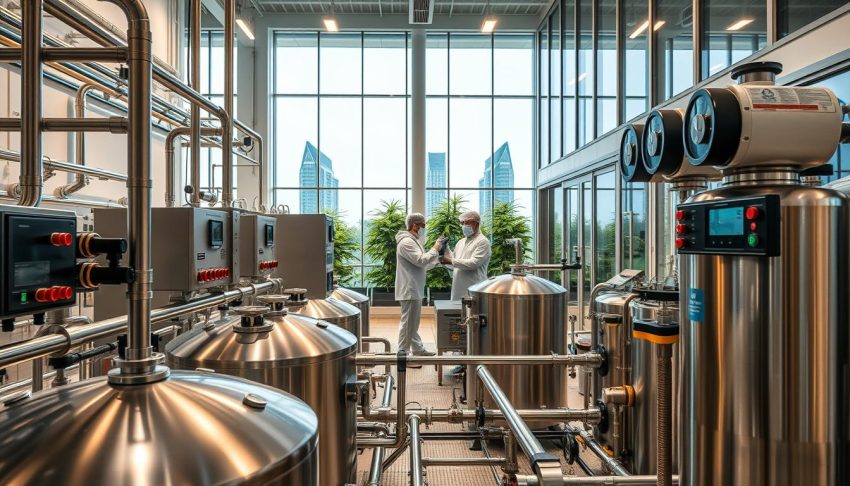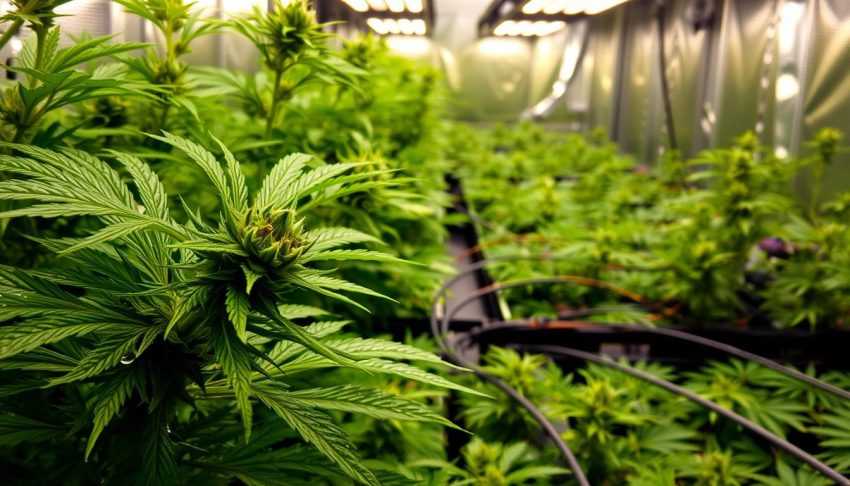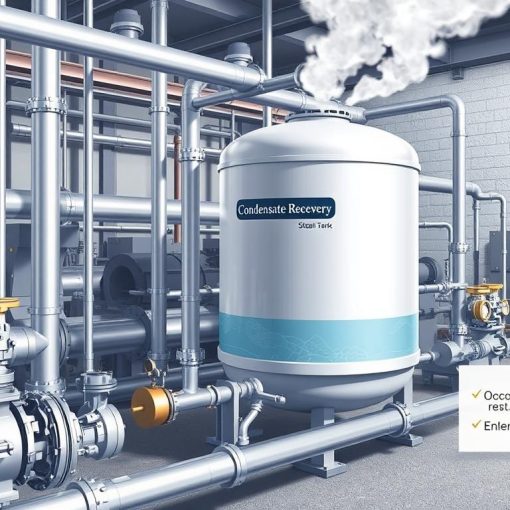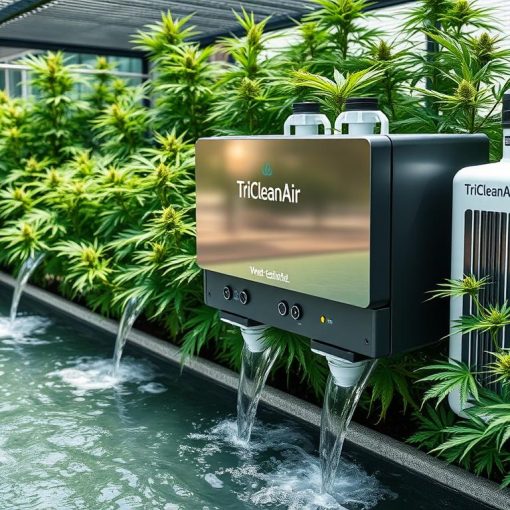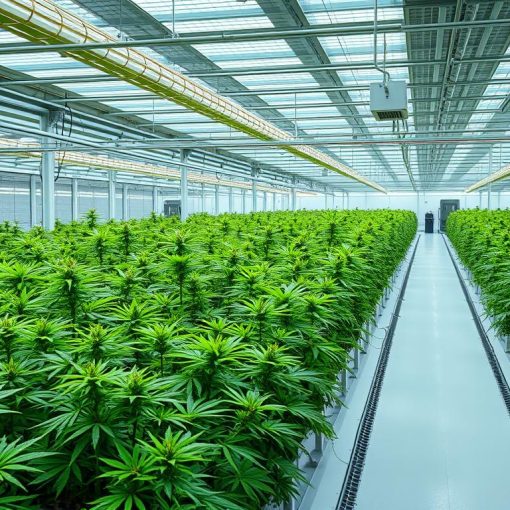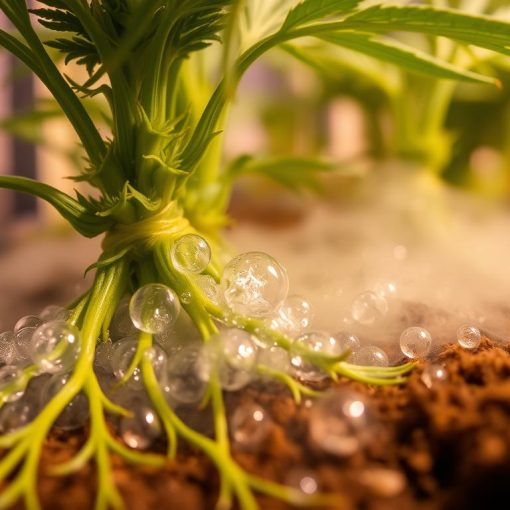Cannabis water treatment is key in growing cannabis. It affects the quality and amount of the crop. Keeping the water right is crucial for a healthy plant. This leads to better crops and less harm to the environment.
Good water treatment is essential for growers. It stops diseases and gives plants the nutrients they need. By treating water well, growers can also help the planet. We’ll look closer at how water treatment impacts growing cannabis.
Introduction to Cannabis Water Treatment
Water treatment is vital in growing cannabis. Knowing the basics helps growers improve their crops and reduce harm to the environment. We’ll cover why water treatment is so important in growing cannabis.
Key Takeaways
- Proper cannabis water treatment is essential for maintaining a healthy and thriving cannabis plant
- Cannabis water treatment directly affects the quality and yield of the crop
- Effective cannabis water treatment helps to prevent water-borne diseases
- Cannabis water treatment is critical for reducing environmental impact
- Understanding cannabis water treatment is vital for improving crop yields and quality
- Cannabis water treatment is a crucial component of cannabis cultivation techniques
Understanding Water Treatment Fundamentals
Cannabis farming needs good water treatment for healthy plants and high yields. Water quality is key in growing cannabis. Knowing how to treat water is crucial for plant health and growth.
Water quality affects how well plants absorb nutrients. Proper water treatment stops harmful substances from harming plants. This helps plants grow well in their environment.
Important things in water treatment are pH levels, nutrients, and contaminants. Keeping these balanced helps plants grow strong. This is especially true in hydroponic farming, where plants rely on the solution for growth.
Good water treatment is essential for healthy plants and more yields. By understanding and using the right methods, growers can make a great environment. This leads to better crops and more profit.
Impact of Water Quality on Cannabis Yield and Potency
Water quality is key in growing cannabis. It affects both the yield and the strength of the plants. Marijuana plant nutrition depends a lot on the water’s quality. Good water helps plants absorb the nutrients they need.
To get the best results, it’s important to focus on water quality optimization. This means keeping an eye on pH levels, nutrient content, and microbes. By doing this, growers can make sure their plants get what they need. This leads to better growth and stronger buds.
Here are some important things to think about when improving water quality for growing cannabis:
- Keep an eye on pH levels for better nutrient uptake
- Adjust nutrient content to match the plant’s needs
- Use good strategies to manage microbes
By focusing on marijuana plant nutrition and water quality optimization, growers can make their cannabis crops better. As the cannabis industry keeps growing, so will the need for good water quality.
Essential Components of Water Treatment Systems
For cannabis cultivation, a good water treatment system is key. It ensures plants get the right water and nutrients. In sustainable cannabis farming, using water treatment systems that are eco-friendly is crucial.
Important parts of cannabis water systems include filters. They remove bad stuff from the water. Effective filtration stops plant diseases and helps plants grow well. Other key parts are tools for managing pH, ways to add nutrients, and places to store water.
Here are some key considerations for cannabis water treatment systems:
- Filtration systems: removing impurities and contaminants from the water
- pH management tools: maintaining optimal pH levels for plant growth
- Nutrient delivery methods: providing essential nutrients for plant development
- Water storage solutions: storing and distributing water efficiently
By adding these parts to cannabis water systems, growers can make a system that’s good for plants and the planet. This is vital for sustainable cannabis farming. It helps save water and cuts down on waste.
Advanced Water Treatment Technologies for Cannabis Cultivation
The cannabis industry is booming, and so is the need for better water treatment. Cannabis water treatment is key to keeping water quality high. This, in turn, affects the quality of the cannabis grown. Reverse osmosis is a top tech used in hydroponic cannabis farming. It cleans water by removing impurities and contaminants.
Ultraviolet (UV) treatment is another method used. It kills harmful bacteria and microorganisms that can damage plants. Ozone treatment is also used to purify and disinfect water. These methods are vital for keeping cannabis crops healthy and disease-free.
Using advanced water treatment technologies in cannabis farming brings many benefits. These include:
- Improved water quality
- Reduced risk of water-borne diseases
- Increased crop yields
- Enhanced plant growth and health
By adopting these technologies, cannabis growers can produce healthier crops. This is crucial for making high-quality cannabis products.
Implementing Sustainable Water Management Practices
The cannabis industry is growing fast. It’s key to use water wisely to lessen harm to the environment. Good cannabis crop management and marijuana plant nutrition come from using water well. This means recycling and saving water. It helps growers use less water, cut down on waste, and keep the environment healthy.
Some important ways to manage water include:
- Using water-saving irrigation systems
- Collecting and storing rainwater
- Recycling and reusing water whenever it’s possible
By using these methods, cannabis growers can use less water. This lowers their impact on the environment. It also helps with cannabis crop management and
Water Recycling Methods
Recycling water is a big part of using water wisely in cannabis growing. By reusing water, growers can use less of it and throw away less. This is good for the planet.
Conservation Techniques
Using techniques like growing drought-resistant plants and smart irrigation helps too. These methods cut down on water use. They also help with cannabis crop management and marijuana plant nutrition.
Common Water Management Challenges and Solutions
Cannabis cultivation and water quality are key to solving water treatment problems. Keeping the pH levels right is crucial for plant growth. Regular tests help spot pH issues and nutrient shortages, allowing for quick fixes.
Some common water treatment challenges in cannabis cultivation include:
- pH imbalances
- nutrient deficiencies
- contaminants and impurities
Growers can tackle these issues with the right techniques and water quality strategies. This means using filters, pH tools, and nutrient systems for the best water. It helps create a healthy space for plants to grow.
Testing and monitoring water regularly is vital. It helps catch problems early. This way, growers can make smart choices to improve plant health.
Good water quality also cuts down on contaminants. This is good for the crop and the environment. By focusing on water quality, growers can grow healthy plants and help the planet.
Cost-Benefit Analysis of Professional Water Management Systems
Investing in professional water treatment systems for cannabis cultivation might seem pricey. Yet, it’s crucial to weigh the long-term gains and savings. These systems help in sustainable cannabis agriculture, cutting down environmental harm while boosting crop quality and yield.
Professional water treatment systems ensure top-notch water for cannabis plants. These plants are very sensitive to water quality. They need a precise mix of nutrients to grow well. Using cannabis watering systems tailored for these plants helps use water more efficiently and cuts down on waste.
- Improved crop yields and quality
- Reduced water waste and conservation
- Increased efficiency and reduced labor costs
- Enhanced environmental sustainability
The upfront cost of professional water treatment systems might look steep. But, the long-term savings and benefits are substantial. By adopting sustainable cannabis agriculture and cannabis watering systems, growers can enhance their profits and lessen their environmental footprint.
Best Practices for Water Treatment Monitoring
Monitoring water treatment is key for better crop management. Regular water tests are needed to keep water quality right for growing cannabis. This means checking pH levels, nutrient levels, and other important factors that help plants grow.
With a strong monitoring system, growers can spot problems early. Record-keeping and data analysis are also crucial. They help growers track water quality changes and make smart decisions to improve their systems.
Some top tips for monitoring cannabis water treatment include:
- Regular water testing to ensure optimal pH and nutrient levels
- Monitoring water temperature and other key parameters
- Implementing a data-driven approach to adjust water treatment systems
- Keeping accurate records of water quality and crop health
By following these tips, growers can improve their water treatment and crop management. This leads to healthier plants and more yields.
Good monitoring and adjustments in water treatment systems can stop diseases and lessen environmental harm. By focusing on water treatment monitoring, growers can have a successful and green cannabis crop management plan.
Conclusion: Revolutionizing Cultivation Through Effective Water Management
The cannabis industry is growing fast, and good water management is key. It helps with growing healthy marijuana plants and farming cannabis with hydroponics. By using the latest in water treatment and sustainable practices, growers can make their crops better.
This article showed how important water quality is for cannabis plants. It talked about the main water factors and how to use top-notch filters and nutrient systems. Now, growers have the tools they need to change how they grow cannabis.
The future of cannabis depends on those who focus on water management. By choosing sustainable methods and staying up-to-date with new tech, growers can lead the market. They will make high-quality products for those who want the best.

